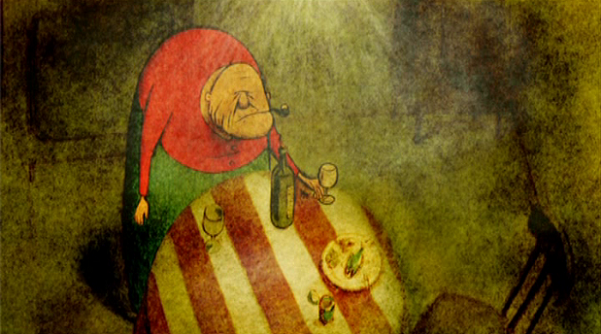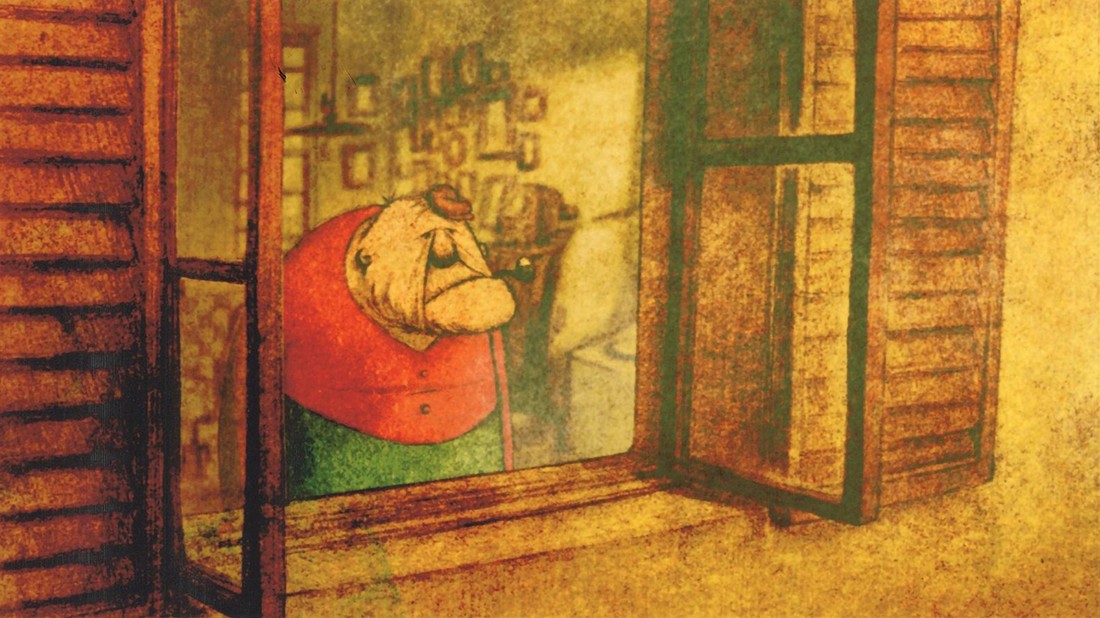Between my never ending binges on Netflix, I came across a very curious short film – The House of Small Cubes. It had a 97% match for me. Netflix had never let me down before with its recommendations (that is, indeed, how I discovered and binged BoJack Horseman before final exams – I wonder what that reveals about my current state of mind), so I decided to give it a try.
An eternity (which lasted 12 minutes) later, I was jerked back to reality with tears in my eyes.
I was moved by the sheer beauty and poignancy of the film. The animation is phenomenal and says more than words ever could (quite literally, since the short film is silent – driven solely by melancholy music and minimalist animation).
The film begins in a very strange setting – a house in the middle of the ocean, with boats sailing around it, and extremely annoying seagulls (I hate seagulls) flying above it. The little house rises above it, but just barely. The protagonist, a widowed man, lives alone, with his beloved pipe and a few odd belongings. His house has a trapdoor, which can be opened when the protagonist wishes to catch fish for dinner.

The Protagonist wakes up to find his house flooded. So, he begins building a room above his roof where he can live, once the one below gets submerged. He builds a little cubical room, but there’s a slight problem – his pipe falls through the trapdoor, thus forcing our Protagonist to journey through his submerged house to retrieve his prized possession.

The Protagonist begins his descent through his subconscious – a brilliant plot device, in my opinion.
The house stands as a metaphor for the subconscious of the Protagonist. As he goes deeper, he comes across more memories from the past – it is, quite literally, a journey through his pneuma. The music, composed by Kenji Kondo, is on cue, as it emphasizes the complicated emotions the Protagonist feels as he is flooded by his memories and recounts everything he has lost. These memories present themselves seemingly like ghosts of past lifetimes.
Perhaps therein lies the true beauty of this short – one’s house tells the story of their life. The Protagonist, while moving his possessions on higher floor for the umpteenth time, dives down into his own memory. As he floats through the old spaces, their stories start to unfold before his eyes. He sees the development in reverse order, starting with grandchildren and ending with the relationship with the love of his life.

The Protagonist retrieves more than his pipe by the time he returns to his current life.
This short leaves a lot to the viewer – we have no clue as to what the Protagonist is thinking, and we are left reflecting on our own thoughts by the time the he retrieves his pipe and surfaces above water.
With the entire world as a metaphor for life and the passage of time itself, this short sends you spiraling down memory lane and as you glimpse through the old man’s life, you are posed with questions that we think about but never truly answer – If you were to contemplate on your life right now, what do you think would be the moments that you would take to your grave? or How long will the people who matter now in your life be around? (this kind of existential dread is my Tuesday).
However, no man can live his life in the reverberations of the past. The only way out is forward – even fish that stop swimming eventually drown (I have spent too much time in Bengal, as you can clearly see from my reference to fish here). It does not do to dwell on the past and forget to live in the present, and this short reminds me of this quite emphatically.
Drenched with meaning, seasoned with style and pregnant with emotions, The House of Small Cubes is 12 minutes well spent, although the feeling it leaves you with will last much longer. For a “film” with no voice acting, it has a voice, as brief as it may be.
-Anant Shri
